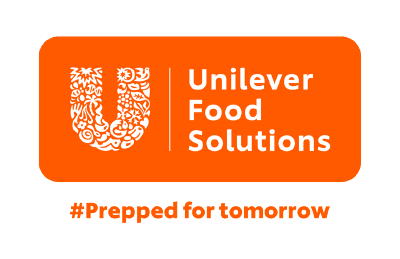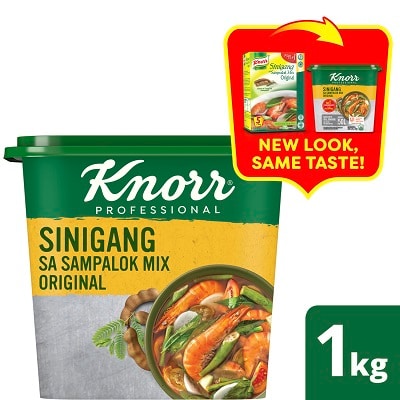Safety and Sanitation Best Practices for All Stages of Food Preparation
Different stages of food preparation require stringent attention to food safety and sanitation. Here’s how to improve food supply chain management.
Following food safety and sanitation regulations is paramount in any kitchen, whether you’re running a food truck or a bustling restaurant. Everyone involved in the stages of food preparation must ensure that each ingredient is handled with care, minimizing the risk of contamination. This effort, however, goes beyond washing hands frequently and sanitizing utensils.
Food sanitation guidelines aren’t limited to the kitchen. They also apply to all areas of supply chain management in the restaurant industry, from sourcing the raw ingredients to plating. When you carefully monitor each process, you create a safer work environment for your staff and increase your business reputation. In short, adhering to food safety and sanitation rules helps your restaurant thrive.
Food Safety Practices

Safety hazards are present in different stages of food preparation. Restaurant operators must take necessary steps to prevent food handling issues and protect their customers at all costs. Here are tips on implementing proper food safety practices – from truck to table.
1. Choose reliable suppliers.
The quality of ingredients you use is directly influenced by how high your suppliers uphold food safety standards. To build a reliable farmer-to-consumer supply chain, seek out established, professional suppliers with good reputations. Prioritize local as much as possible. Look at both price and reliability, but also delve deeper into their implemented systems for quality control.
Additionally, maintain open lines of communication with your suppliers so you can stay aware of any changes in their practices. Schedule regular check-ins to discuss changes in your food supply needs and foster a strong partnership.
2. Inspect every food shipment.
Upon receiving any delivery, thoroughly examine each product for signs of damage. Look for any unusual odors or discoloration that might indicate spoilage. Next, verify that processed or dry goods match their specifications and have not exceeded their expiration dates.
You should also know the optimum storage temperatures for perishables to help eliminate potential food handling issues. For example, fresh, chilled food should be kept at 5°C or lower, while frozen food must be stored at -18°C or lower.
3. Keep storage clean and organized.

One of the guideposts of proper food storage is the First In, First Out (FIFO) method. Always label items with the date received (and/or date of production) and place the older stock in front or on top of the shelf so that you can use up your food supply more efficiently.
Additionally, change the boxes and cartons the ingredients are delivered in. As for perishable goods like fish fillets, process them immediately or place them in a freezer at the correct temperature.
4. Be meticulous with food preparation.

Ideally, you must consume all fresh ingredients within the day to guarantee peak quality and flavor. However, not all restaurants get daily stock deliveries, which makes it crucial to learn how long certain food items can be stored and prepped beforehand. This knowledge not only helps avoid contamination risks but also reduces food waste.
For instance, meat, poultry, and seafood should be processed immediately once removed from the fridge and never refrozen to prevent the loss of nutrients. Thaw these items inside a refrigerated cabinet set between 0-4°C or place them in a sealed plastic container under running water. Cook them within two hours after thawing.
Fresh vegetables and dairy products, on the other hand, can be kept for longer. They should be stored between 2-4°C and only removed from the chiller when needed.
Pro tip: To ensure accountability and traceability, label all prepped food with the date and time of handling and the initials of the person who completed the job. Additionally, maintain a well-organized storage system to prolong shelf life.
5. Cook food thoroughly.
When food is undercooked, harmful bacteria such as Salmonella, E. coli, and Listeria can survive, posing serious health risks to customers. To mitigate this, keep this checklist in mind:
- Cook food thoroughly to kill or reduce microorganisms to an acceptable level.
- Monitor batch cookery. Sometimes, not all food items are cooked evenly in batch cooking.
- Cook at the required minimum internal temperature.
- Keep hot food at 57°C and cold food at 0-4°C.
- Hold food for service in small batches to keep it from the temperature danger zone (TDZ).
- Measure internal temperatures every two hours while on display.
- Reheat food to a minimum internal temperature of 74°C for 15 seconds.
Safe Minimum Internal Temperature Chart
Category |
Ingredients |
Safe cooking temperature (Internal) |
Ground meat and meat mixtures |
Beef, pork, veal, lamb |
71°C |
Turkey, chicken |
74°C |
|
Other proteins |
Chicken and turkey, whole |
74°C |
Poultry parts |
74°C |
|
Duck and goose |
74°C |
|
Stuffing (cooked alone or in bird) |
74°C |
|
Ham |
Fresh (raw) |
71°C |
Pre-cooked (to reheat) |
60°C |
|
Eggs and egg dishes |
Eggs |
Cook until yolk and white are firm |
Egg dishes |
71°C |
|
Seafood |
Fin fish |
63°C or when flesh is opaque and separates easily with fork |
Shrimp, lobster, crabs |
Cook until flesh is pearly and opaque |
|
Clams, oysters, mussels |
Cook until shells open during cooking |
|
Scallops |
Cook until milky white or opaque and firm |
|
Leftovers and casseroles |
|
74°C |
6. Serve your guests a clean plate of food.

Chefs and food servers must observe proper hygiene at all stages of food preparation. Consistently reinforce the need for practices such as frequent hand washing, proper use of clean gloves, and regular sanitization of utensils. Every plate, fork, knife, and spoon must be free from residual food particles.
7. Manage your leftovers.
You might have over-ordered ingredients or made too many dishes during a service. In such cases, reheat untouched leftovers and serve them for the next guests or repurpose them for other menus. If you have excess fresh and uncut ingredients in the kitchen, don’t throw them away. Utilize them in new recipes or turn them into garnishes to elevate existing dishes. However, any leftovers or unused ingredients that have been touched or partially consumed by customers should be discarded immediately.
8. Establish supply chain traceability and recall plan.
If a food safety issue arises, it’s imperative to recall the tainted food from storage, the kitchen, and service areas to prevent further contamination. Your next step is to secure the tainted item in an enclosed space where it won’t affect other ingredients or dishes. Then, backtrack all activities, starting from the moment the dish was served. Investigate how it was prepared, stored, and received, tracing each step to identify the root cause.
Lastly, sanitize all kitchen equipment, utensils, serving ware, and other tools that may have come into contact with the contaminated food. Don’t forget to remove every single-use item that could have also been exposed.
How to Handle Food Safety Complaints

Customers want their grievances heard and taken seriously. Give them your undivided attention and document all relevant details about the problem at hand, including the complainant’s contact information, transaction details, time of the incident, as well as specific food items involved. In serious cases, offer to bring the customer to the hospital.
Conduct a thorough investigation to assess any potential breaches in food safety practices or areas where improvements may be needed. Once finished, take corrective actions, such as retraining staff and upgrading equipment. Communicate transparently with the complainant about the steps taken to address their concerns and offer a sincere apology (and compensation if appropriate).
Food safety and sanitation is a continuous commitment that involves all stages of food preparation. By embracing these practices, you can build a foundation of excellence that reflects in every dish you serve and in the satisfaction of your guests. Download the free HACCP guide from UFS to to ensure your restaurant meets the highest safety standards.

Congratulations, you’ve completed The Good Food Safety Practices topic!
Continue on to the next topic, pick a related topic from the Food Safety module, or go back to the Chefmanship Academy modules page.
Related Products
Product added to list
Unable to add product to list
Product removed from list
Unable to remove product from list
Related Articles
What you'll get:
- Access to free Chef trainings
- The best recipes and tips from Chefs around the world
- The latest culinary trends











